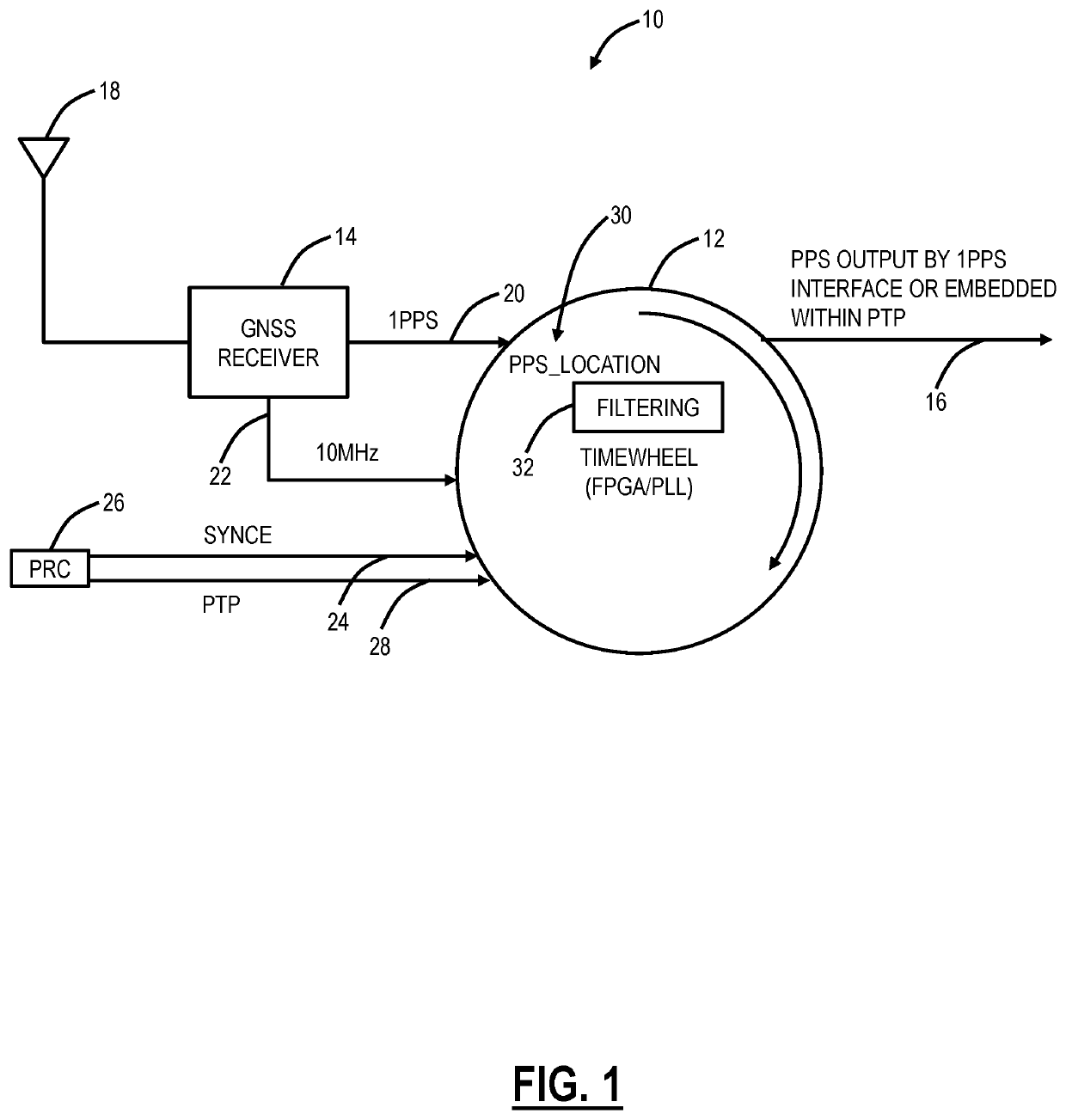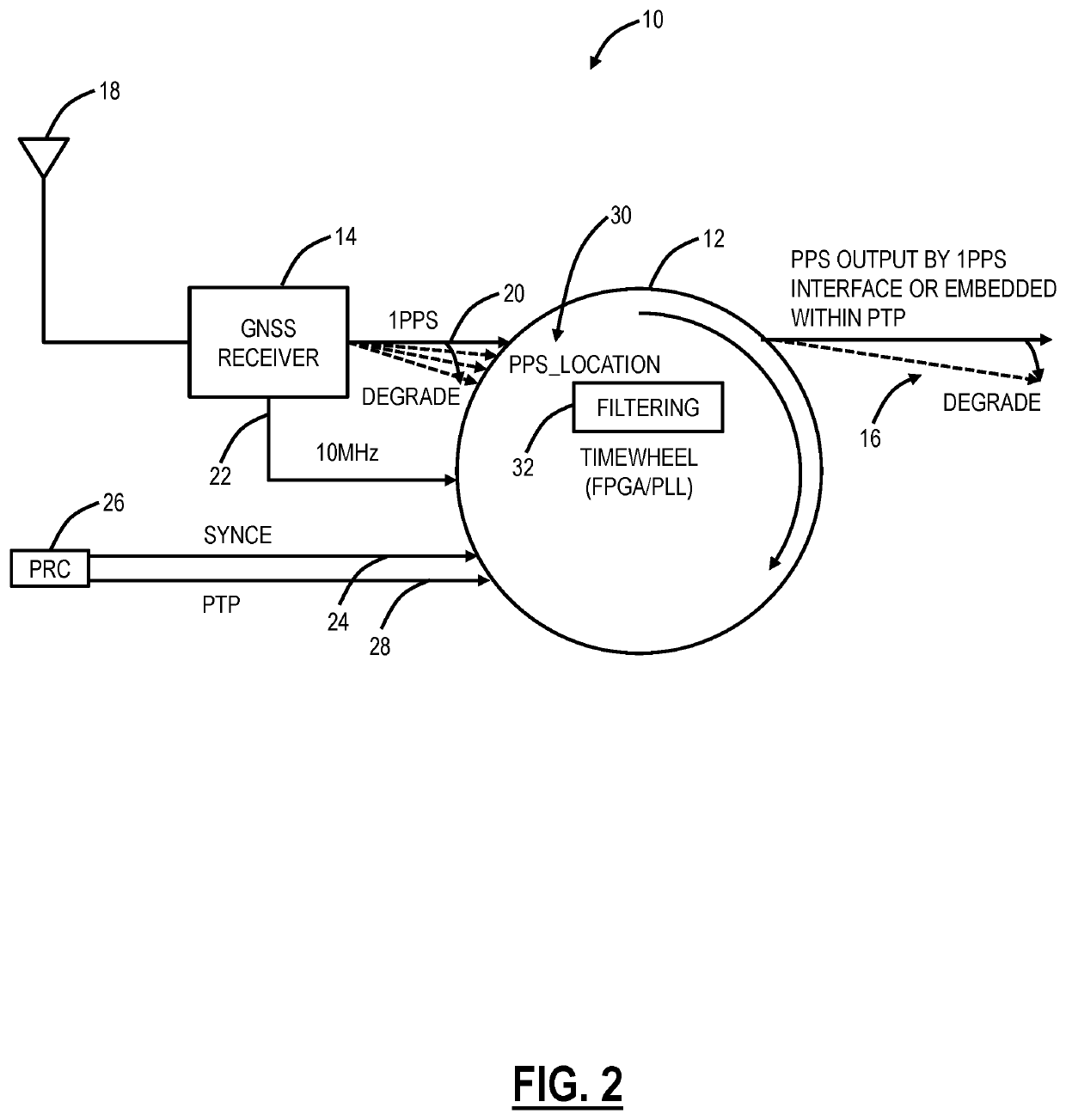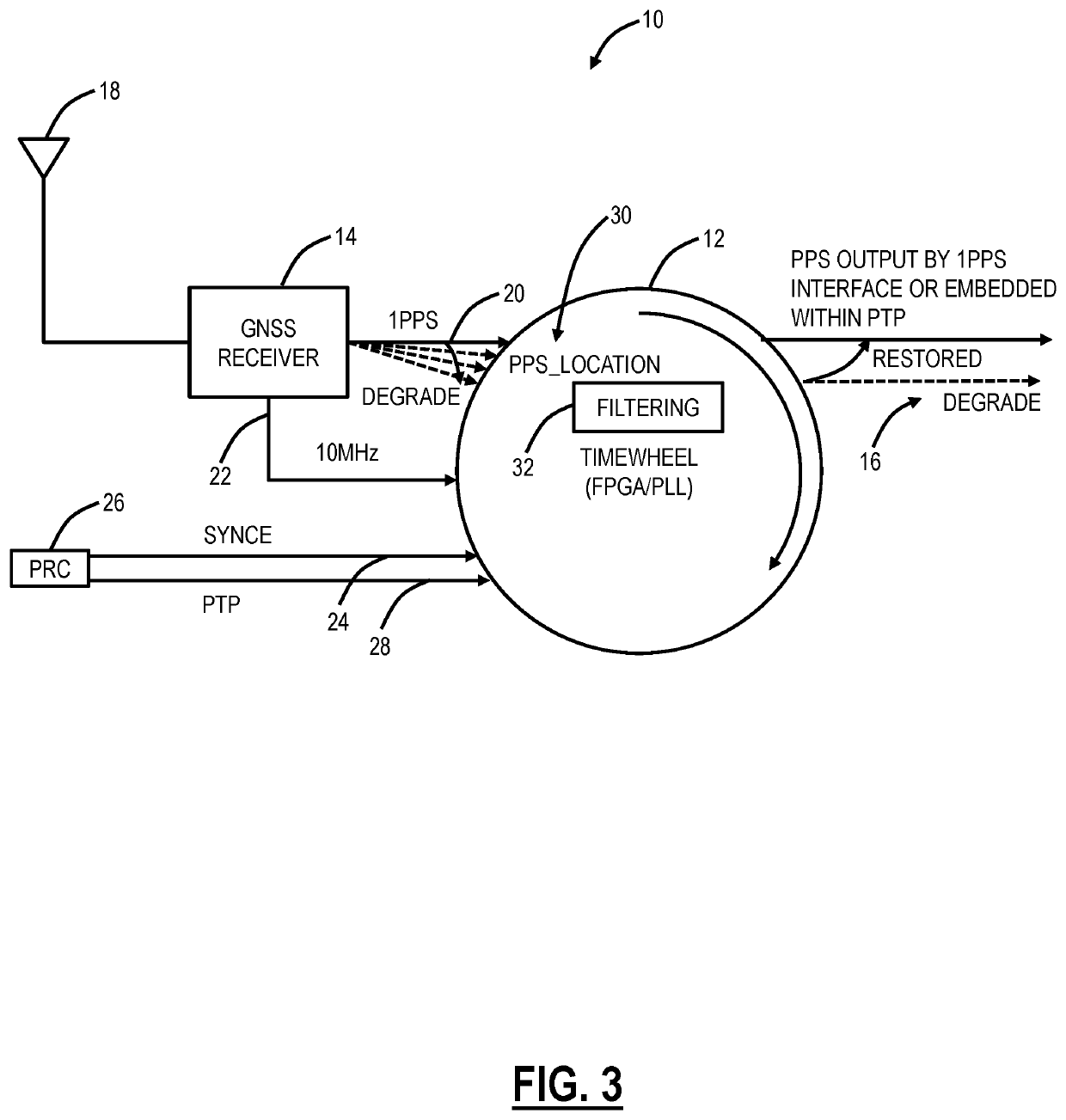Phase clock performance improvement for a system embedded with GNSS receiver
a technology of phase clock and receiver, which is applied in the field of clocks in electrical circuits, can solve the problems of inaccurate clock synchronization of spectrum efficiency factors among clusters of coordinated radios, and achieve the effect of restoring phase accuracy and enhancing holdover performan
- Summary
- Abstract
- Description
- Claims
- Application Information
AI Technical Summary
Benefits of technology
Problems solved by technology
Method used
Image
Examples
Embodiment Construction
[0015]Again, the present disclosure relates to systems and methods for Global Navigation Satellite System (GNSS) receiver phase clock performance. Specifically, the present disclosure includes a circuit, an apparatus, and a method for maintaining a history of a GNSS receiver phase clock and enhancing or restoring phase accuracy based on state prior to a degradation. The present disclosure applies to stationary GNSS receivers. The present disclosure provides a process to maintain the history of the GNSS receiver phase clock. The phase history from the GNSS receiver can be maintained by the classification of time interval windows over a defined duration of time. For example, a GNSS receiver's position and time can be maintained for a period of 2 hours, 1 hour, 30 minutes, 10 minutes, and 1 minute prior to the receiver experiencing signal loss or signal degradation. The phase history from the GNSS receiver can also be maintained by classification of the number of visible satellites (e....
PUM
 Login to View More
Login to View More Abstract
Description
Claims
Application Information
 Login to View More
Login to View More - R&D
- Intellectual Property
- Life Sciences
- Materials
- Tech Scout
- Unparalleled Data Quality
- Higher Quality Content
- 60% Fewer Hallucinations
Browse by: Latest US Patents, China's latest patents, Technical Efficacy Thesaurus, Application Domain, Technology Topic, Popular Technical Reports.
© 2025 PatSnap. All rights reserved.Legal|Privacy policy|Modern Slavery Act Transparency Statement|Sitemap|About US| Contact US: help@patsnap.com



